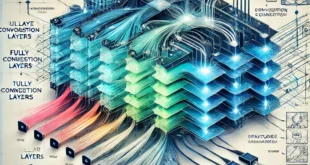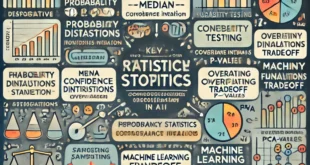Bidirectional Encoder Representations from Transformers (BERT) has revolutionized the field of natural language processing (NLP). Developed by Google in 2018, BERT introduced a powerful new approach to how machines understand the context of words in a sentence. Unlike previous models, which processed text in a unidirectional manner (either from left to right or right to left), BERT’s bidirectional architecture allows …
Read More »AI Foundations
Meta Llama 4: Redefining Open-Source AI with Multimodal Mastery and Unprecedented Scale
April 6, 2025 – In a landmark move for artificial intelligence, Meta has officially launched Llama 4, its most advanced open-source AI model family to date. Released on April 5, 2025, this suite of models combines revolutionary architecture, multimodal capabilities, and industry-leading performance – all while maintaining Meta’s commitment to open-source accessibility. With three specialized models (Scout, Maverick, and Behemoth), …
Read More »Understanding Outliers in Machine Learning: A Comprehensive Guide
In the realm of machine learning, data quality is essential. Subpar data quality can result in erroneous models and deceptive insights, rendering it essential to detect and rectify anomalies inside datasets. Outliers are among the most prevalent data quality concerns. This blog will examine the concept of outliers, their influence on machine learning models, and effective methods for managing them—utilizing …
Read More »How can we implement an MLP with 1×1 Convolution: A Deep Dive into Advanced Architectures
Introduction Machine learning (ML) and deep learning have progressed swiftly in the past decade, transforming domains such as computer vision, natural language processing, and robotics. Among the numerous designs available, the integration of Multilayer Perceptrons (MLP) with convolutional processes has garnered significant attention. Although convolutions are generally linked to Convolutional Neural Networks (CNNs), their integration with Multi-Layer Perceptrons (MLPs) can …
Read More »A Comprehensive Guide to Statistics for AI
Statistics constitutes the foundation of artificial intelligence (AI). Statistical methods offer the instruments necessary for the interpretation, modeling, and analysis of data, ranging from comprehension of data distributions to the construction of machine learning models. This blog will guide you through the basic statistical principles necessary for students aspiring to flourish in AI. 1. Introduction to Statistics in AI Statistics …
Read More »Quantum Computing with Google’s Willow Chip
The promise of quantum computing to address challenges intractable by conventional computers makes it a thrilling technological frontier. The latest breakthrough from Google, the Willow quantum chip, is at the core of this revolution. Willow, the newly disclosed product of the business, is expected to revolutionize quantum computing by tackling difficult tasks at record speeds with a marked decrease in …
Read More »An All-Inclusive Guide to Exploring Kaggle Datasets
Kaggle, a leading platform for data science and machine learning aficionados, offers a veritable treasure trove of datasets. These datasets are designed to accommodate users of all skill levels and use cases, whether you’re just starting out with data analysis or are an experienced professional working on sophisticated models. Using Kaggle’s dataset repository as our starting point, this blog will …
Read More »Understanding Advanced Python Programming Concepts
1. Optimal Performance in Python This blog will focus on optimizing Python code by exploring topics such as memory management, just-in-time (JIT) compilation, Python’s Global Interpreter Lock (GIL), and methods for enhancing performance. Critical Areas to Address: The GIL: A Comprehensive Overview Profiling Python code with timeit and cProfile Memory management with tools like gc and pympler Making use of …
Read More »Understanding Advanced Python Concepts: A Deep Dive into Powerful Features
1. Python Functions Effective iteration over potentially huge datasets without loading them totally into memory is made possible with Python’s strong generator function. The yield keyword is used by generator functions instead of the return statement that is used by normal functions. The value is returned and the function’s state is preserved every time yield is met. When the next …
Read More » AI Generated Apps AI Code Learning Technology
AI Generated Apps AI Code Learning Technology








